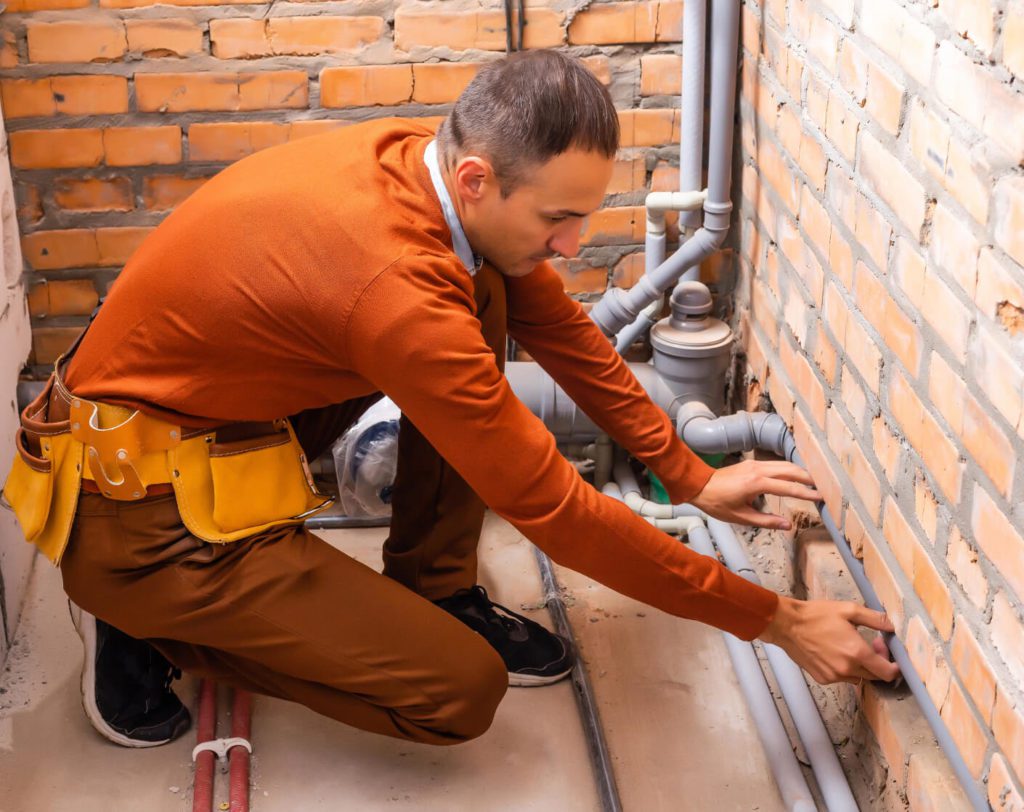

The journey to homeownership is filled with many important decisions, and one of those decisions might revolve around the type of plumbing the house contains. Galvanized plumbing, once a standard, has been under scrutiny in recent years. If you’re considering a home with this type of plumbing, it’s essential to understand the pros and cons, as well as the potential costs and considerations involved. But, should I buy a house with galvanized plumbing?
Read More:
- How Much House Can i Afford With 60k Salary? Step by Step Guide
- Selling a House in an Irrevocable Trust Before Death: A Step-by-Step Guide
- Can Grandchildren Inherit From Grandparents? Step by Step Guide
- Can a Nursing Home Take a Trust? The Ultimate Guide
- Selling Mom’s House After Death: A Compassionate Guide
What is Galvanized Plumbing?
Galvanized plumbing refers to pipes that have been coated with a protective layer of zinc to prevent rusting and corrosion. This type of plumbing was popular in homes built before the 1960s. The idea was that the zinc coating would extend the life of the pipe by preventing corrosion.
The Pros of Galvanized Plumbing:
- Durability: One of the main reasons galvanized plumbing became popular is its strength. These pipes were built to last and can remain functional for many years.
- Cost-Effective: For many years, galvanized pipes were seen as a cost-effective solution, especially when compared to alternatives like copper.
- Resistant to Corrosion: The zinc coating does initially protect the pipes from the harmful effects of corrosion.
The Cons of Galvanized Plumbing:
- Corrosion Over Time: Despite the zinc coating, as the years go by, galvanized pipes can begin to corrode from the inside. This corrosion can lead to restricted water flow and reduced water pressure in your home.
- Potential for Lead: Older galvanized pipes may have been connected with lead-based solder. Over time, this solder can deteriorate, potentially releasing lead into your water supply. This is especially concerning as lead is harmful when ingested.
- Discoloration of Water: The corrosion inside the pipes can result in brown or rusty water, especially when the tap is first turned on.
- Replacement Costs: Eventually, galvanized pipes will need replacement, and this can be an expensive and disruptive process.
Key Considerations When Buying a House with Galvanized Plumbing:
- Home Inspection: Before making a decision, it’s crucial to have a thorough home inspection. This inspection should specifically assess the state of the galvanized plumbing, checking for signs of corrosion, leaks, or other damage.
- Water Testing: Given the potential risk of lead contamination, it’s a good idea to get the water tested. This will give you peace of mind about the safety of the water in your potential new home.
- Budgeting for Replacement: If you decide to buy a home with galvanized plumbing, it’s wise to budget for potential replacement costs down the line.
- Insurance Considerations: Some insurance companies might raise premiums or even deny coverage for homes with older galvanized plumbing. It’s essential to check with your insurance provider to understand any potential implications.
Read More:
- How Much House Can i Afford With 60k Salary? Step by Step Guide
- Selling a House in an Irrevocable Trust Before Death: A Step-by-Step Guide
- Can Grandchildren Inherit From Grandparents? Step by Step Guide
- Can a Nursing Home Take a Trust? The Ultimate Guide
- Selling Mom’s House After Death: A Compassionate Guide
The Future of Galvanized Plumbing:
While galvanized plumbing was the norm decades ago, the industry has evolved, and newer, more efficient materials have emerged. Modern homes typically use copper, PEX, or PVC plumbing due to their longevity and safety benefits. If you’re considering an older home with galvanized pipes, think about the house’s future value. As these types of pipes become even more outdated, future buyers might view them as a drawback.
Weighing the Renovation Benefits:
If the house is perfect in every other way, it might be worth buying it and considering a plumbing overhaul as a renovation project. Renovating the plumbing can:
- Increase Home Value: A modern plumbing system can be a significant selling point when you decide to move on. Future buyers will appreciate the effort and investment put into replacing outdated plumbing.
- Improve Water Quality: By replacing old galvanized pipes, you can ensure that your water remains clear, clean, and safe for consumption.
- Reduce Maintenance Costs: Newer plumbing systems are less likely to have issues, which means fewer repairs and reduced maintenance costs over time.
Discuss with Professionals:
Before making a final decision, it’s wise to:
- Consult with a Plumber: Get an expert’s opinion on the state of the plumbing. They can provide insights into how long the current system might last and the costs involved in replacing it.
- Speak to a Real Estate Agent: An experienced agent can guide you on how the galvanized plumbing might affect the home’s value now and in the future.
- Consider Financing Options: If you decide to replace the plumbing after purchasing, explore financing options. Some home improvement loans or equity lines of credit could help spread out the costs of such a project.
Considering the Environmental Impact:
Another angle to consider when pondering the question of galvanized plumbing is the environmental impact. Here’s what you should know: Read More: average cost of a kitchen remodel in Massachusetts
- Recyclability: Galvanized steel pipes are recyclable. If you decide to replace the system, ensure the old pipes are disposed of responsibly. This can reduce the environmental footprint of your renovation.
- Water Wastage: A deteriorating galvanized plumbing system might lead to leaks. Even minor drips can result in significant water wastage over time, impacting both the environment and your utility bills.
- Energy Efficiency: Corroded pipes can strain your home’s water system, requiring pumps and heaters to use more energy. Upgrading to a more modern system can increase the energy efficiency of your home.
Long-term Planning:
It’s essential to think long-term when considering a home with galvanized plumbing. Here are some forward-looking strategies:
- Budget for Upgrades: Even if the plumbing is functional now, it might not be in a decade. Having a savings plan dedicated to home improvements can be invaluable.
- Monitor Water Quality: Regularly testing your water ensures it remains safe. Over time, as pipes deteriorate, the risk of contaminants increases.
- Routine Maintenance: Annual inspections can help spot potential issues before they escalate, ensuring the longevity of your plumbing system.
Read More:
- How Much House Can i Afford With 60k Salary? Step by Step Guide
- Selling a House in an Irrevocable Trust Before Death: A Step-by-Step Guide
- Can Grandchildren Inherit From Grandparents? Step by Step Guide
- Can a Nursing Home Take a Trust? The Ultimate Guide
- Selling Mom’s House After Death: A Compassionate Guide
The Broader Picture
While plumbing is a significant aspect of a home, it’s just one of many factors to consider. Think about the home’s location, size, architectural beauty, and other unique features. Sometimes, the benefits of a property might outweigh the challenges posed by outdated plumbing.
Is it Safe to Drink Water From The Tap in Homes With Galvanized Plumbing?
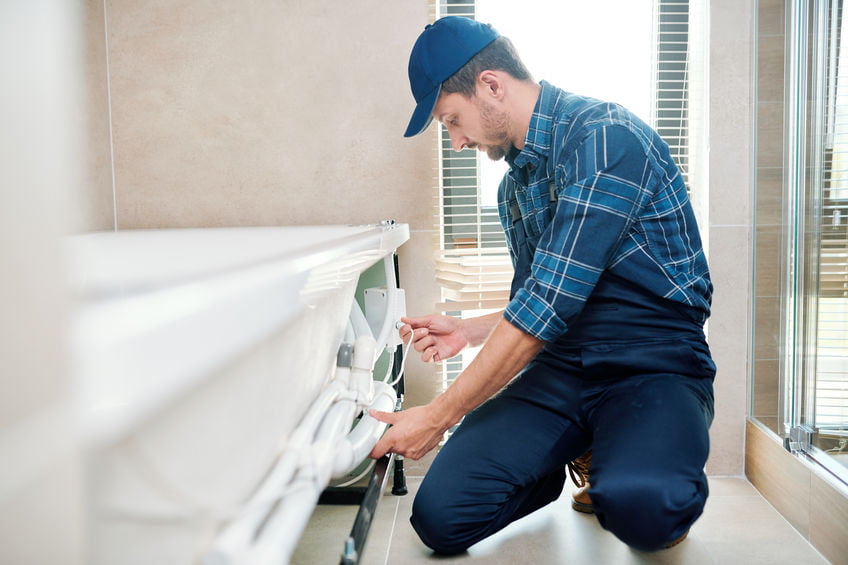

Drinking water from homes with galvanized plumbing can pose potential health risks, depending on several factors. Here’s a breakdown of the concerns and considerations:
Concerns with Galvanized Plumbing:
- Corrosion and Rust: Over time, the zinc coating on galvanized pipes can erode, leading to corrosion inside the pipes. This corrosion can cause water to appear brown or rusty when first turned on. While rusty water isn’t necessarily harmful if ingested, it can cause aesthetic and taste issues.
- Lead Contamination: One of the more serious concerns with older galvanized pipes is the potential for lead contamination. Before the 1980s, galvanized pipes were often installed using lead-based solder. Over time, the solder can deteriorate, releasing lead into the water. Moreover, older galvanized pipes themselves can sometimes accumulate lead leached from the public water supply. Prolonged exposure to lead can cause serious health issues, especially in children and pregnant women. Symptoms include developmental delays, learning difficulties, irritability, weight loss, fatigue, and abdominal pain.
- Reduced Water Flow: The build-up of mineral deposits and rust can narrow the diameter of the pipes, reducing water pressure and flow. While this isn’t a direct health concern, it can impact the functionality of your plumbing system.
Safety Measures:
- Regular Testing: If you live in a home with galvanized plumbing or are considering buying one, it’s crucial to test the water regularly for contaminants, especially lead. This can provide peace of mind about the water’s safety.
- Let Water Run: If the tap hasn’t been used for several hours, let the water run for a minute or two before using it. This can help flush out any contaminants that may have leached into the water.
- Filtering Systems: Consider installing water filtration systems that are specifically designed to remove lead and other potential contaminants. Ensure you maintain the system according to the manufacturer’s recommendations.
- Seek Expertise: If you’re unsure about the state of your galvanized plumbing, consulting with a plumbing professional can provide insights into its condition and any potential risks.
While galvanized plumbing was a standard choice for many years, its age and the materials used pose potential health risks today. If you have or are considering a home with this type of plumbing, it’s crucial to be proactive in ensuring the water’s safety. Regular testing, appropriate water treatment, and being informed about potential risks are all essential steps in guaranteeing safe drinking water for you and your family.
How Long Do Galvanized Pipes Last?
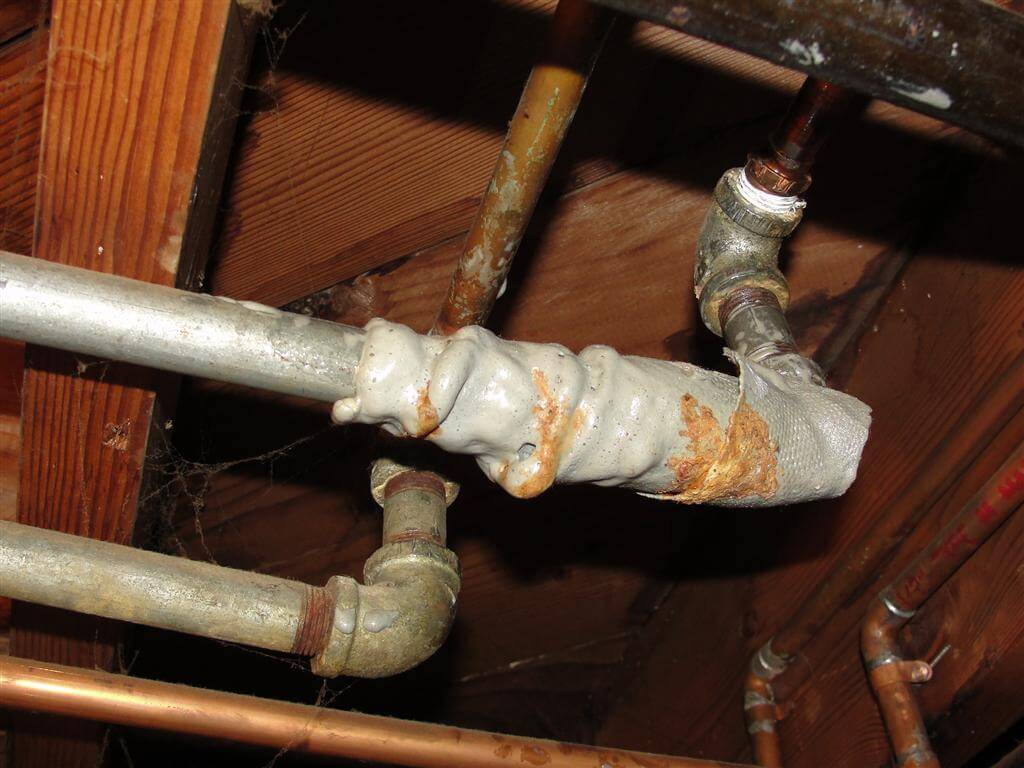

Galvanized pipes, which are steel pipes coated with a protective layer of zinc to prevent rust and corrosion, were commonly used in homes built before the 1960s. Over time, however, the zinc layer can erode, leaving the steel exposed and susceptible to rust.
Expected Lifespan:
On average, galvanized pipes have a lifespan of about 20 to 50 years, depending on various factors. However, it’s essential to understand that this range can vary significantly based on the following conditions:
- Water Quality: Areas with hard water, which contains high mineral content, can lead to mineral deposits in the pipes, accelerating corrosion.
- Water pH: Highly acidic or alkaline water can speed up the corrosion process of the metal, shortening the pipe’s lifespan.
- Water Pressure: High water pressure can wear down pipes faster, especially if there are existing weak points or corrosion.
- Environment: If the pipes are located in a humid, damp, or saline environment, the rate of corrosion can increase.
- Initial Pipe Thickness: Thicker pipes will naturally last longer than thinner ones. Some older homes might have thicker pipes, which can extend their lifespan.
Signs That Galvanized Pipes Need Replacement:
While the expected lifespan provides a general guideline, it’s essential to be aware of the signs that indicate your galvanized pipes might need replacement:
- Discolored Water: If the water has a brownish or reddish tint, especially after being unused overnight, it can indicate rust inside the pipes.
- Reduced Water Pressure: This can be due to mineral deposits, rust, or other obstructions building up inside the pipes.
- Visible Rust and Corrosion: If you can see portions of your pipes, check for visible signs of rust, corrosion, or leaks.
- Frequent Leaks: As pipes corrode, they become more prone to leaks.
Read More:
- How Much House Can i Afford With 60k Salary? Step by Step Guide
- Selling a House in an Irrevocable Trust Before Death: A Step-by-Step Guide
- Can Grandchildren Inherit From Grandparents? Step by Step Guide
- Can a Nursing Home Take a Trust? The Ultimate Guide
- Selling Mom’s House After Death: A Compassionate Guide
How Much Does it Cost to Replace Galvanized Plumbing?
The cost to replace galvanized plumbing varies based on a multitude of factors including the size of the home, the region or country you’re located in, the complexity of the job, the type of new piping material chosen, and local labor rates. However, I can provide a general ballpark based on common factors and averages up to the year 2023.
Factors Influencing Cost:
- Size and Layout of the Home: Naturally, a larger home with more bathrooms and fixtures will require more materials and labor, leading to a higher cost.
- Location: Labor and material costs can vary significantly from one region or country to another. Urban areas, where the cost of living is higher, can also have higher plumbing rates.
- Accessibility: Homes that have easily accessible plumbing (e.g., via a basement or crawl space) can be less costly to re-pipe than homes where walls and floors need to be opened up.
- Type of Replacement Material: Different piping materials come with different costs. Copper is generally more expensive than PEX (cross-linked polyethylene) or PVC.
- Additional Work: If walls need to be opened to access pipes, there will be costs associated with repairing those walls after the plumbing work is done. Similarly, any fixtures that need to be replaced will add to the cost.
General Ballpark Estimates (as of 2023):
- PEX Piping: Re-piping a house with PEX can range from $4,000 to $10,000 for a medium-sized home. PEX is flexible and easier to install, which can result in a quicker job and lower labor costs.
- Copper Piping: Re-piping a house with copper can be more expensive, ranging from $8,000 to $20,000 for a medium-sized home. Copper is durable but requires more labor for installation, hence the higher cost.
- Whole House Repiping: For a complete re-piping of an average home, including removal of old pipes and installation of new ones, costs can range from $5,000 to $15,000 or more, depending on the factors mentioned above.
- Per Room or Fixture: Some homeowners choose to re-pipe one section of their home at a time. In such cases, you might pay anywhere from $1,000 to $3,000 per room or fixture.
- Additional Costs: Remember to factor in potential costs for repairing walls, ceilings, or floors that were opened up during the re-piping process.
If you’re considering replacing galvanized plumbing, it’s essential to get quotes from multiple local plumbers or contractors to get an accurate estimate for your specific situation. They can assess the current state of your plumbing, and the layout of your home, and provide a detailed breakdown of the costs involved.
Should I Replace My Galvanized Steel Plumbing
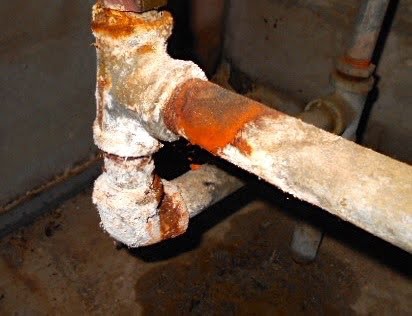

Deciding whether or not to replace galvanized steel plumbing requires careful consideration of several factors. Galvanized pipes were commonly used in homes built before the 1960s. Over time, they can pose certain challenges and concerns. Here are some key points to help you make an informed decision:
Reasons to Consider Replacing Galvanized Steel Plumbing:
- Corrosion and Rust: As the zinc coating on galvanized pipes erodes over time, the underlying steel becomes exposed and can rust. This corrosion can lead to reduced water flow, frequent leaks, and even pipe bursts.
- Discolored Water: Rusty pipes can cause water to become brownish or reddish. This is not only aesthetically displeasing but can also be a health concern if consumed over extended periods.
- Lead Contamination: Older galvanized pipes might have been joined using lead-based solder. Over time, the corrosion inside these pipes can release lead particles into the water, which poses serious health risks when consumed.
- Decreased Water Pressure: The buildup of rust and mineral deposits inside galvanized pipes can reduce water pressure, affecting everyday activities like showering and cleaning.
- Increased Potential for Leaks: Corroded pipes are more susceptible to leaks, leading to potential water damage in your home.
- Home Value: If you plan to sell your home, outdated plumbing can be a significant deterrent for potential buyers. Modern plumbing systems can increase your home’s value and appeal.
Factors to Consider:
- Cost: Replacing an entire plumbing system can be expensive. It’s essential to get quotes from multiple contractors and weigh the immediate costs against long-term benefits and potential repair expenses.
- Disruption: Re-piping a home can be disruptive. It might involve opening walls, floors, or ceilings to access and replace old pipes.
- Age of the Plumbing: If your galvanized pipes have been in place for several decades, they are more likely nearing the end of their lifespan.
- Water Quality: If you’ve noticed changes in your water’s taste, color, or pressure, these could be indicators that your pipes need replacement.
- Future Plans: If you plan to renovate or expand your home, it might be an opportune time to replace old plumbing.
If your home has galvanized steel plumbing and you’re experiencing issues like discolored water, reduced pressure, or frequent leaks, it’s probably time to consider replacement. Modern plumbing materials like copper, PEX, or CPVC offer longer lifespans, better water quality, and fewer maintenance issues. Consulting with a plumbing professional can provide insight into the condition of your pipes and help you make an informed decision.
How Do I Sell a House With Galvanized Plumbing in Massachusetts?
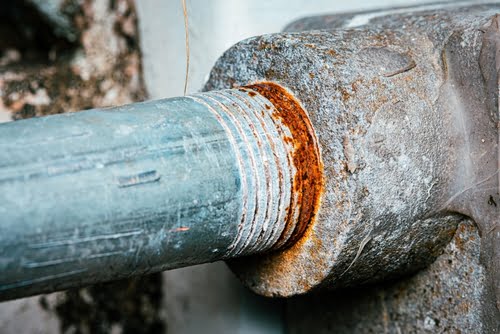

Selling a house with galvanized plumbing in Massachusetts (or anywhere else) can pose some challenges given the concerns many buyers have with older plumbing systems. However, with proper disclosure, effective marketing, and potentially making some updates, you can make the process smoother. Here’s a step-by-step guide:
1. Disclosure:
- Full Transparency: Massachusetts real estate law requires sellers to disclose any known material defects about the property. While you aren’t obligated to volunteer every detail, not disclosing known issues with the plumbing system can lead to potential legal disputes in the future.
- Provide Documentation: If you’ve had the plumbing inspected or worked on recently, providing potential buyers with this documentation can help alleviate concerns.
2. Consider Pre-listing Inspection:
- Identify Issues: By having a pre-listing inspection, you can identify any significant problems with the galvanized plumbing. This allows you to decide whether to address them before selling or adjust your pricing strategy.
- Provide Assurance: Sharing the results of a pre-listing inspection with potential buyers can provide them with added confidence in the property.
3. Update or Offer Credits:
- Partial Upgrades: If only specific sections of the plumbing are problematic, consider updating those areas.
- Price Reduction: If you don’t want to invest in updating the plumbing, consider reducing the home’s price to account for potential plumbing replacement costs.
- Offer a Credit: Alternatively, you can offer a credit at closing to help the buyers offset the cost of updating the plumbing after the purchase.
4. Marketing Strategy:
- Highlight Other Features: Emphasize other selling points of the house, like location, size, updates, or unique features.
- Target Investors: Some investors are looking for properties they can update and resell. They might be less concerned with the plumbing than end-users.
5. Work with a Skilled Realtor:
- Local Expertise: A realtor with experience in Massachusetts will know how to best navigate the challenges of selling a home with galvanized plumbing in the local market.
- Negotiation Skills: A good realtor can help negotiate with potential buyers who might be hesitant due to the plumbing.
6. Educate Potential Buyers:
- Provide Information: Some buyers may not understand what galvanized plumbing means. Providing them with information about its history, potential issues, and solutions can help demystify the situation.
- Estimate Costs: Offering estimates for plumbing replacement can help potential buyers understand the scope of the project and make informed decisions.
7. Be Prepared for Negotiations:
Given the potential concerns with galvanized plumbing, be prepared for negotiations related to the selling price or repair credits.
8. Ensure a Smooth Closing:
- Stay Compliant: Ensure all paperwork related to the home sale, especially regarding disclosures, is completed accurately.
- Maintain Open Communication: Keep channels of communication open with the buyer to address any last-minute concerns.
While galvanized pipes were a popular choice for decades due to their rust-resistant properties, they don’t last forever. If your home still has galvanized plumbing and you’re nearing the end of the estimated lifespan, or if you’re experiencing any of the signs mentioned above, it might be time to consider replacement options. Modern materials like copper, PEX, or CPVC offer longer lifespans and fewer health concerns.
Read More:
- How Much House Can i Afford With 60k Salary? Step by Step Guide
- Selling a House in an Irrevocable Trust Before Death: A Step-by-Step Guide
- Can Grandchildren Inherit From Grandparents? Step by Step Guide
- Can a Nursing Home Take a Trust? The Ultimate Guide
- Selling Mom’s House After Death: A Compassionate Guide
